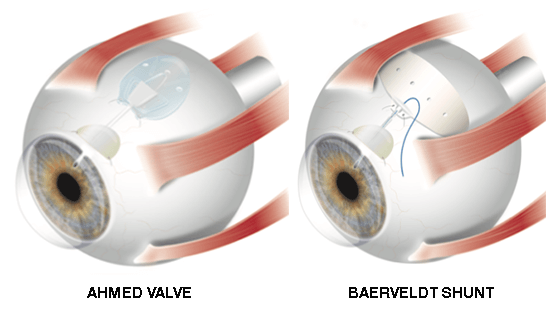

American Academy of Ophthalmology
Learn about the pros and cons of drainage implants for managing eye pressure in glaucoma.
Glaucoma is a serious eye condition that can lead to blindness if left untreated. When traditional treatments like eye drops or laser therapy are not enough to lower eye pressure, doctors may recommend a glaucoma drainage implant. This small device helps redirect excess fluid from the eye, reducing pressure and preventing further damage to the optic nerve. While it cannot reverse vision loss, it plays a crucial role in slowing down the progression of glaucoma.
A glaucoma drainage implant (also called a tube shunt) consists of:

This device allows fluid to drain more effectively, reducing pressure inside the eye. The fluid collects in a small reservoir, where it is naturally absorbed by the body.
Doctors usually recommend this procedure when less invasive treatments fail to control eye pressure. Although it does not restore lost vision, it can help preserve remaining sight by preventing further damage.
The surgery to implant a drainage device is performed in an outpatient setting and typically takes less than an hour. The key steps include:
Most patients will still need to use some glaucoma medications even after receiving the implant.
As with any surgery, glaucoma drainage implant procedures carry risks. Potential complications include:
It’s essential to contact your ophthalmologist immediately if the eye becomes red, painful, or feels abnormal after surgery. These could be signs of a serious infection.
Before deciding on surgery, your doctor will discuss both the benefits and risks to determine if a drainage implant is the right option for managing your glaucoma.
*Boyd, K. (2024, September 16). What Is a Glaucoma Drainage Implant? American Academy of Ophthalmology. https://www.aao.org/eye-health/diseases/glaucoma-drainage-implants
Responsum Health closely vets all sources to ensure that we always provide you with high-quality, reliable information. We do not, however, endorse or recommend any specific providers, treatments, or products, and the use of a given source does not imply an endorsement of any provider, treatment, medication, or procedure discussed within.
Source: {{articlecontent.article.sourceName}}
Receive daily updated expert-reviewed article summaries. Everything you need to know from discoveries, treatments, and living tips!
Already a Responsum member?
Available for Apple iOS and Android
Add Comments
Cancel